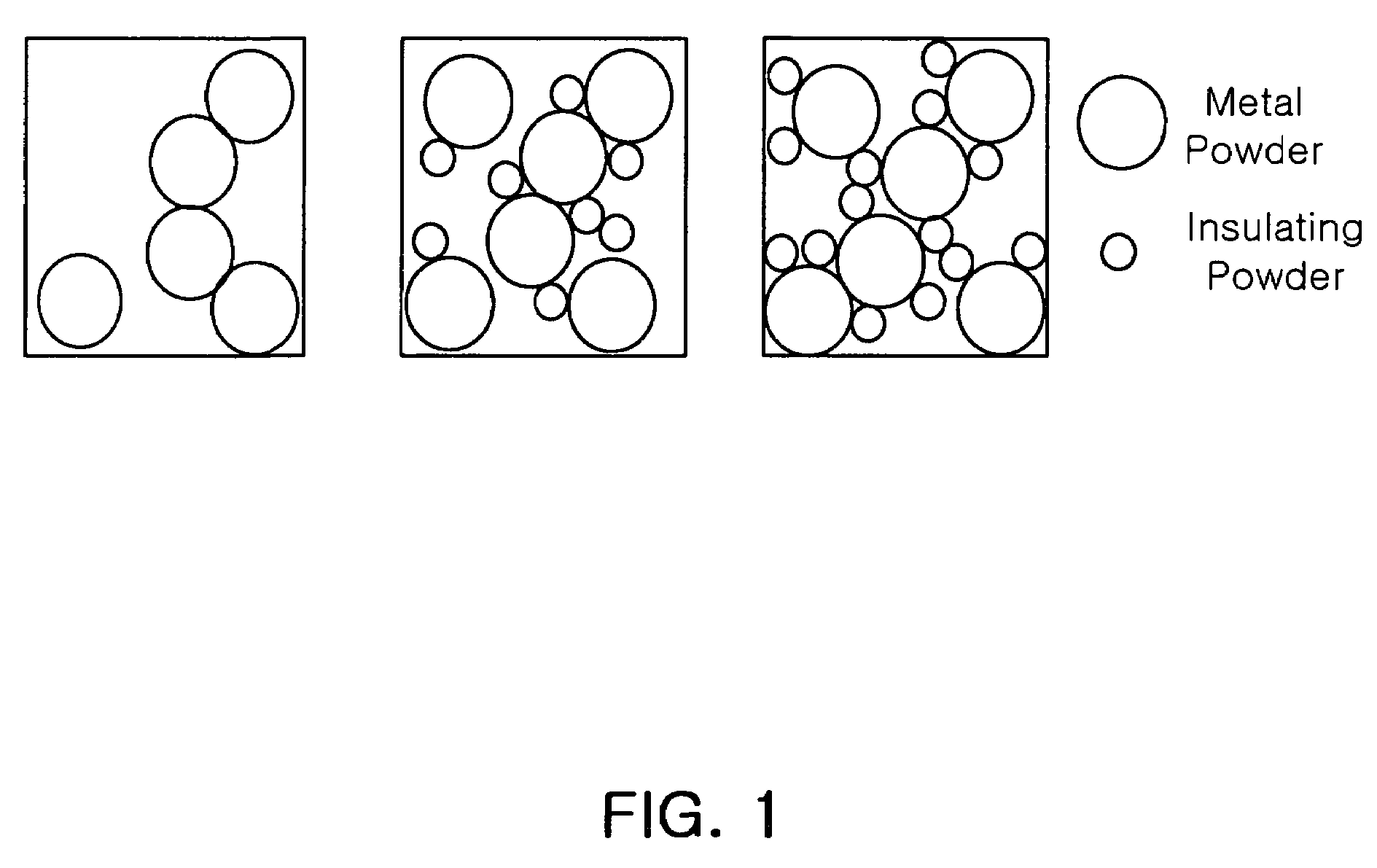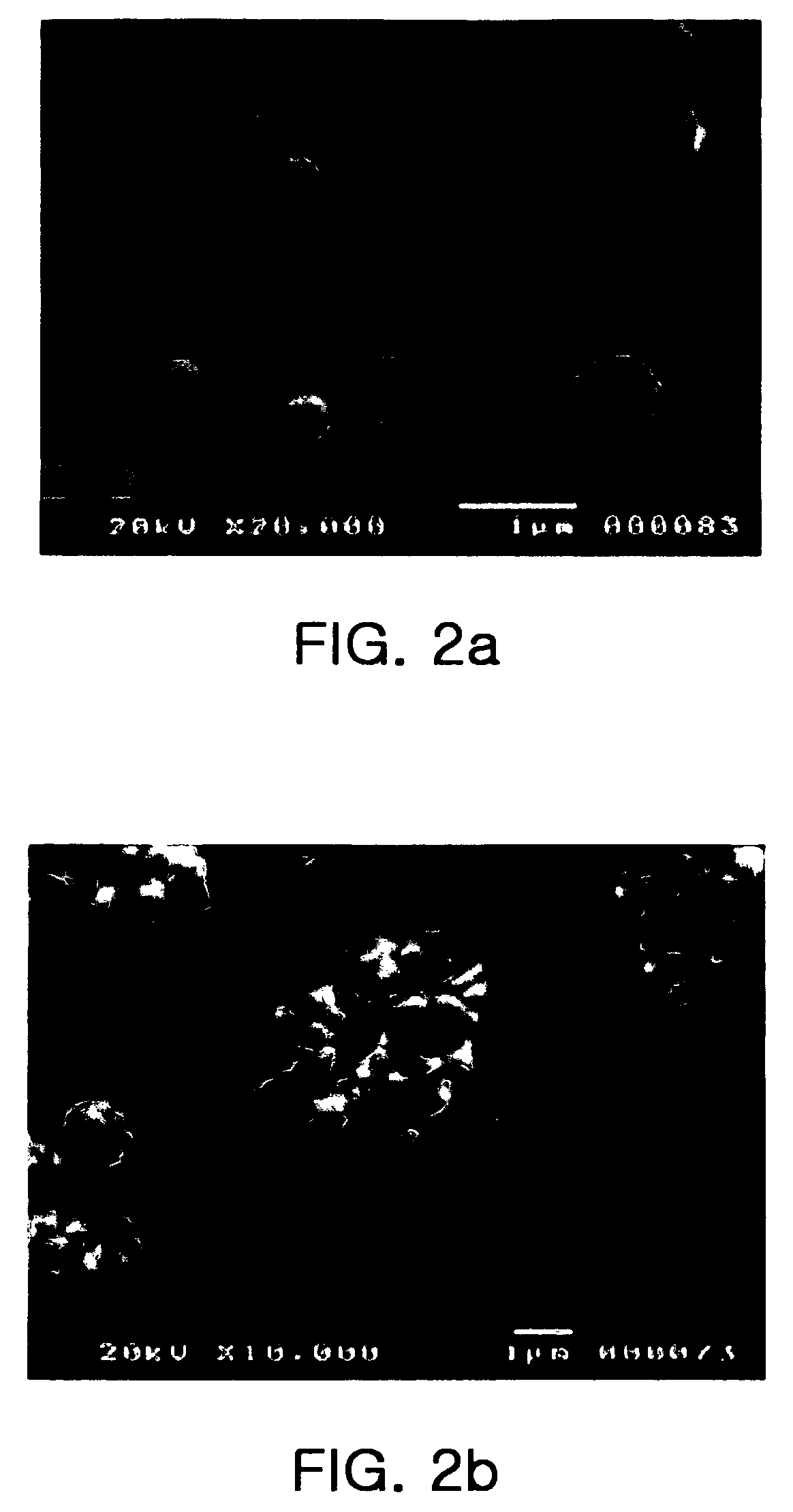High-dielectric constant metal-ceramic-polymer composite material and method for producing embedded capacitor using the same
a composite material and high-dielectric constant technology, applied in the direction of capacitors, fixed capacitor details, capacitors, etc., can solve the problems of difficult to ensure space sufficient to accommodate a number of passive devices around active integrated circuit chips, difficulty in increasing the volume fraction of powder, etc., to inhibit the occurrence of percolation and high metal content
- Summary
- Abstract
- Description
- Claims
- Application Information
AI Technical Summary
Benefits of technology
Problems solved by technology
Method used
Image
Examples
examples
[0047]Hereinafter, the present invention will be explained in detail with reference to the following examples. The following examples serve to illustrate preferred embodiments of the present invention but are not meant to restrict the scope of the invention.
examples 1-2
[0048]PMMA, BaTiO3 (BTO) ceramic particles (average particle diameter: 0.82 μm) as filler particles and Ni particles (average particle diameter: 4 μm) whose surface was roughly treated were mixed together in accordance with the compositions (vol %) indicated in Table 1. At this time, the BTO content was fixed to 10% by volume and the Ni content was increased. Changes in dielectric properties with increasing Ni content were measured.
[0049]Each of the mixtures was treated using a ball mill for 2 hours, and cured using a mounting press under a pressure of 270 bar at 180° C. for 30 minutes. A copper foil was cut into pieces having a predetermined size, attached to both surfaces of the cured sample, and pressed under a pressure of 300 bar to manufacture a final sample.
[0050]The dielectric properties of the sample were measured. Specifically, the dielectric constant and dielectric tangent of the sample were measured using an impedance analyzer at 1 MHz. The obtained values are listed in T...
examples 3-5
[0051]PMMA, BTO ceramic particles (average particle diameter: 0.82 μm) as filler particles and Ni particles (average particle diameter: 4 μm) whose surface was roughly treated were mixed together in accordance with the compositions (vol %) indicated in Table 1. At this time, the BTO content was fixed to 20% by volume and the Ni content was increased. Thereafter, the procedure of Example 1 was repeated.
[0052]The obtained results are shown in Table 1.
PUM
| Property | Measurement | Unit |
|---|---|---|
| surface roughness | aaaaa | aaaaa |
| diameter | aaaaa | aaaaa |
| diameter | aaaaa | aaaaa |
Abstract
Description
Claims
Application Information
 Login to View More
Login to View More - R&D
- Intellectual Property
- Life Sciences
- Materials
- Tech Scout
- Unparalleled Data Quality
- Higher Quality Content
- 60% Fewer Hallucinations
Browse by: Latest US Patents, China's latest patents, Technical Efficacy Thesaurus, Application Domain, Technology Topic, Popular Technical Reports.
© 2025 PatSnap. All rights reserved.Legal|Privacy policy|Modern Slavery Act Transparency Statement|Sitemap|About US| Contact US: help@patsnap.com



